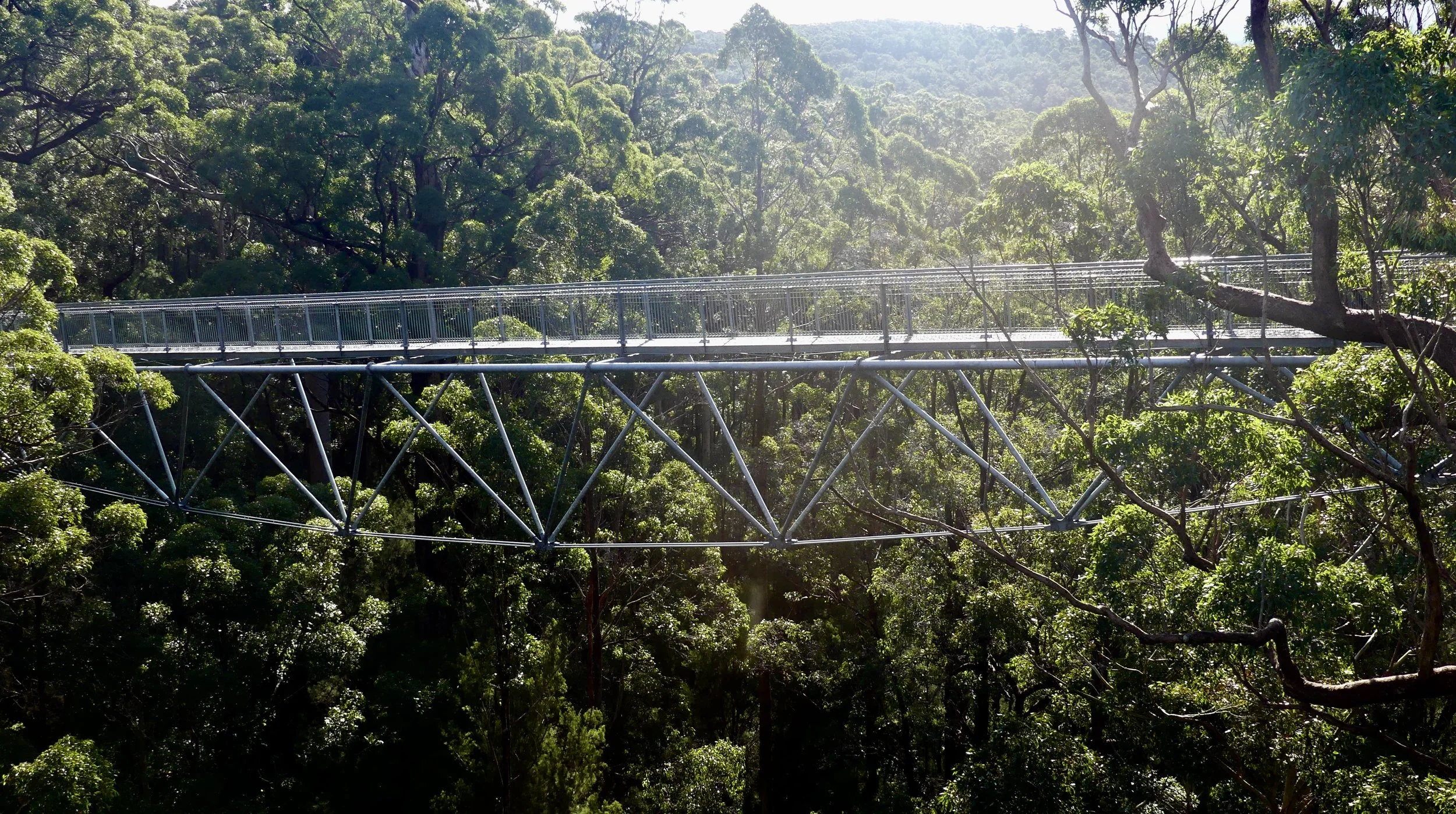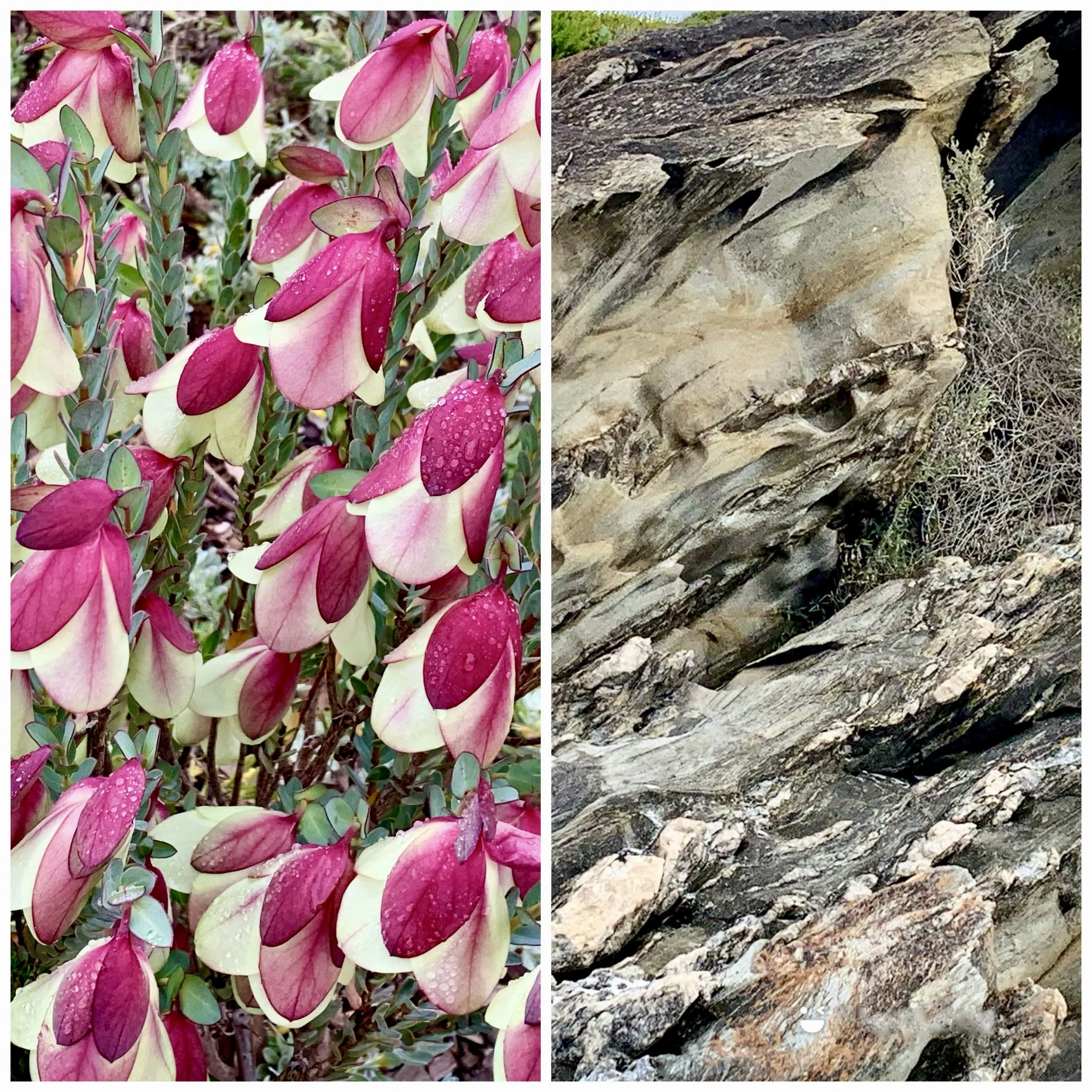Mind The Gap
On Day 34 of the Big Trip, 25 July, we were on our way from Bremer Bay to Albany, a city on the southern tip of Western Australia. The journey was largely uneventful until …
About 30 or 40, maybe more, Carnaby’s Black-Cockatoos were raising a ruckus right by the roadside. The road was empty enough for us to stop abruptly, make a U-turn and return to the fray. The birds were oblivious to our excitement: some were squabbling raucously; others making softer little chatty noises. What a treat it was, out of nowhere, in the middle of nowhere.
We were staying in a campsite at Middleton Beach, just outside Albany. Next morning, we went into town for breakfast at Frederick’s; then a walk-about that included the tourist information office. They recommended we visit The Gap because the wind would be whipping up impressive seas.
Albany town hall
Out and about in York Street
It was pleasant wandering up and down the main drag, York Street, especially with its sea view at the bottom of the hill. The best things by far, however, were the blue-sky backdrop after so many grey days; and Torndirrup National Park, where I must have waited longer than many surfers do for the perfect wave.
Look at those joints!
Torndirrup, meaning ‘white sandy’, was the name of the Aboriginal people who lived in this area before European settlement. The National Park is 400 km southeast of Perth and 10 km south of Albany. Lookouts at The Gap and Natural Bridge provide wonderful views of ocean drama. You can walk out on to a viewing platform 40 metres above raging waves. The platform is supported by five cantilevered beams that extend more than 10 metres beyond their last point of contact with rock. The beams are anchored to stable rock, beyond the joints and faults in the cliff face: some of the rock anchors are as much as nine metres long.
The materials used in the construction of the platform were chosen for their ability to withstand harsh conditions. High-strength stainless steel is resistant to corrosion; and fibre-reinforced grating panels are non-slip and enable you to see through to rock and ocean beneath your feet. A walkway and the platform allow visitors to get close to the elements while keeping them away from vulnerable plants and lichens on rock surfaces.
Natural Bridge
So, these banded rocks, eroded so dramatically, what are they? You may have read mention of granite, or gneiss. If you want more info, the following may help (courtesy of my friend).
However many photos you take of the ocean surging into a narrow rock inlet, the thought that the next wave might be bigger and better niggles away in your brain. Are the shots you’ve already taken in focus? Sooner or later, of course, you have to leave. Then, as you’re walking away, you hear the people who took your place on the platform shreik in delight. Have you missed a bigger wave? Probably not; be strong and move on.
Monster waves
The next feature at Torndirrup required more patience for less reward. If you want to photograph a blowhole, you have to wait with finger poised and react with lightning speed to capture fast-moving spray that disappears in an instant. My friend did rather better than I did: the blowhole looks as if it’s smoking, and the ocean is turbulent.
This stretch of coast is treacherous, and many lives have been lost. On the evening of 14 March 1978, a South Australian tourist was with friends admiring Natural Bridge when he decided to clamber down to the slippery shelf below the bridge to take some photos. He saw a huge wave approaching and tried desperately to scramble back up to safety. But the sea pulled him back, the wet rock grazing him as he slid under the Bridge, over the shelf’s ledge and into deep water. Miraculously, he surfaced beyond the maelstrom and started to drift westwards as the light faded.
Having seen their mate claimed by the sea, his friends quickly went in search of help. As chance would have it, they came upon Park ranger Jack Andrews. A co-ordinated, two-hour rescue effort unfolded, involving the ranger, police, Albany whaling station staff, a spotter plane pilot and the crew of the Cheynes II whale chaser.
As darkness fell, the spotter plane circled overhead, guiding the whale chaser, which was struggling in a massive swell. When the vessel was close enough, the first mate dived into the ocean and dragged the man to safety. Luck and circumstance aside, without the clear thinking and timing of all concerned, the tourist might not have lived to tell the tale. A commemorative plaque near Natural Bridge pays tribute to the outstanding courage of Skipper Paddy Hart; First Mate Keith Richardson and the crew of the Cheynes II; and pilot John Bell. Brave rescuers ensured the man’s survival, but not without considerable risk to themselves.
Unpredictable swells and sudden wind gusts occur frequently along the Southern Ocean coastline. Visitors are warned of the dangers and advised to always remain on pathways and within the confines of lookouts. I have seen people do crazy-dangerous things as I’ve travelled in recent years. The best example of inconsiderate stupidity I witnessed was in Watarrka National Park in Northern Territory back in 2015. We had almost completed the 6-km rim walk at Kings Canyon, and looked across to where we’d been on the other side, only to see this numpty. Below the overhang on which he sat was a 100-metre drop.
Bad weather washed out our last day in Albany. I would have liked to visit Gull Rock National Park across the bay, but you could barely walk in the torrential, lashing rain, so there would have been little point.
On our final evening we ventured out to eat at Garrison on top of a hill behind Middleton Beach. I ate pork belly with Irish mash, which was delish. After dinner we sat in front of a roaring fire: it felt wintry but cosy, and we didn’t want to go outside again.
We awoke the next day to relative calm, and it was warmer, but the weather forecast was for a further series of cold fronts to move across the region. We had no idea just how much rain was about to hit us in Denmark, so we moved on hopefully, after a drama of lost keys, that is. It meant we left Albany without having eaten breakfast. The diary says it took ages to drive along the Denmark Scenic Route – ‘that wasn’t particularly’ – before we found a suitable place to stop and grab some breakfast.
I have a theory: if the weather gods are against you; if you’re cold, hungry and grumpy; and things generally are not running smoothly (like having to search for essential keys), then it’s more than likely any scenic route will appear OK rather than spectacular.
Leafy sea dragon in the port
Whaling vessel





















